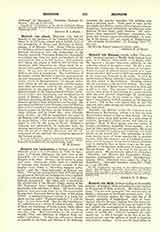

Heinrich von Melk, German satirist of the twelfth century; of knightly birth and probably a lay brother in the convent of Melk, in Styria. His chief work is a poem “Von des todes gehugede” (the remembrance of death), a discourse on the theme memento mori. It is a bitter invective against the vices and sins of all classes, especially of knighthood. After an introduction wherein the poet explains how the depravity of his age has incited him to his task, he turns to his real subject, the contemplation of death, the horrors of which are portrayed in glaring contrast with the vanity of earthly life. Concrete examples are summoned up. A wife is brought to the bier of her deceased spouse, and the ugliness of death is depicted with hideous realism. A son sees his dead father in a vision, and hears from him a gruesome description of the torments which await the sinner after death. The poet does not shrink from the disgusting and revolting in order to impress hardened souls. While this poem is mainly directed against the vices of the laity, particularly those of knighthood, the clergy are made the subject of scathing satire in the poem known as “Priesterleben”, which is also attributed to Heinrich von Melk, though his authorship is not certain. It is to be noted, however, that, while the clergy are severely arraigned, their sacred office is scrupulously respected. Both poems date from about 1160. Heinrich von Melk is one of the most notable exponents of the spirit of asceticism that followed in the wake of the reform movement emanating from the monastery of Cluny. In his writings the conflict between asceticism and secularism, so characteristic of the eleventh and twelfth centuries, has found its most impassioned expression. The two poems were edited by Heinzel, “Heinrich von Melk” (Berlin, 1867).
ARTHUR F. J. REMY

